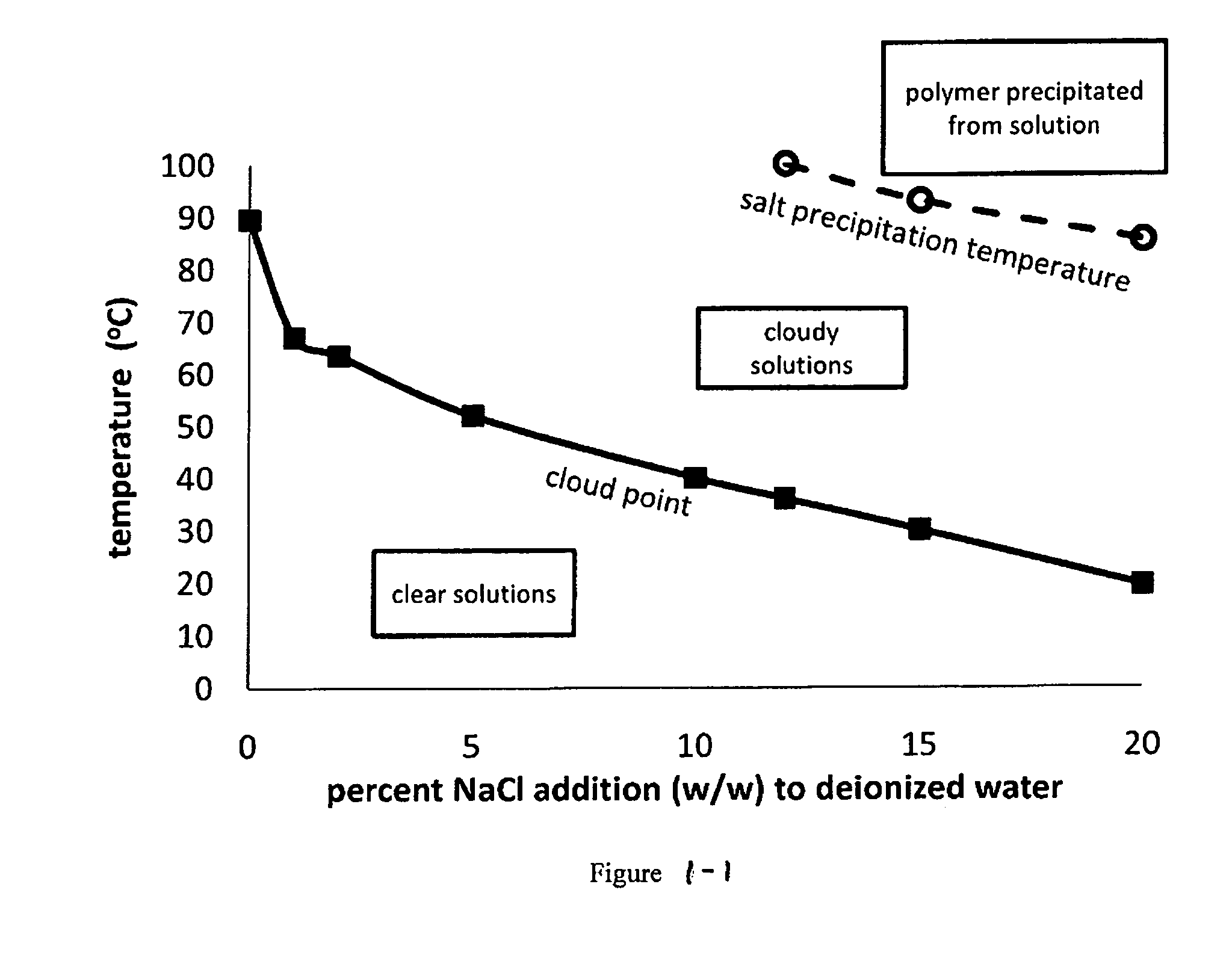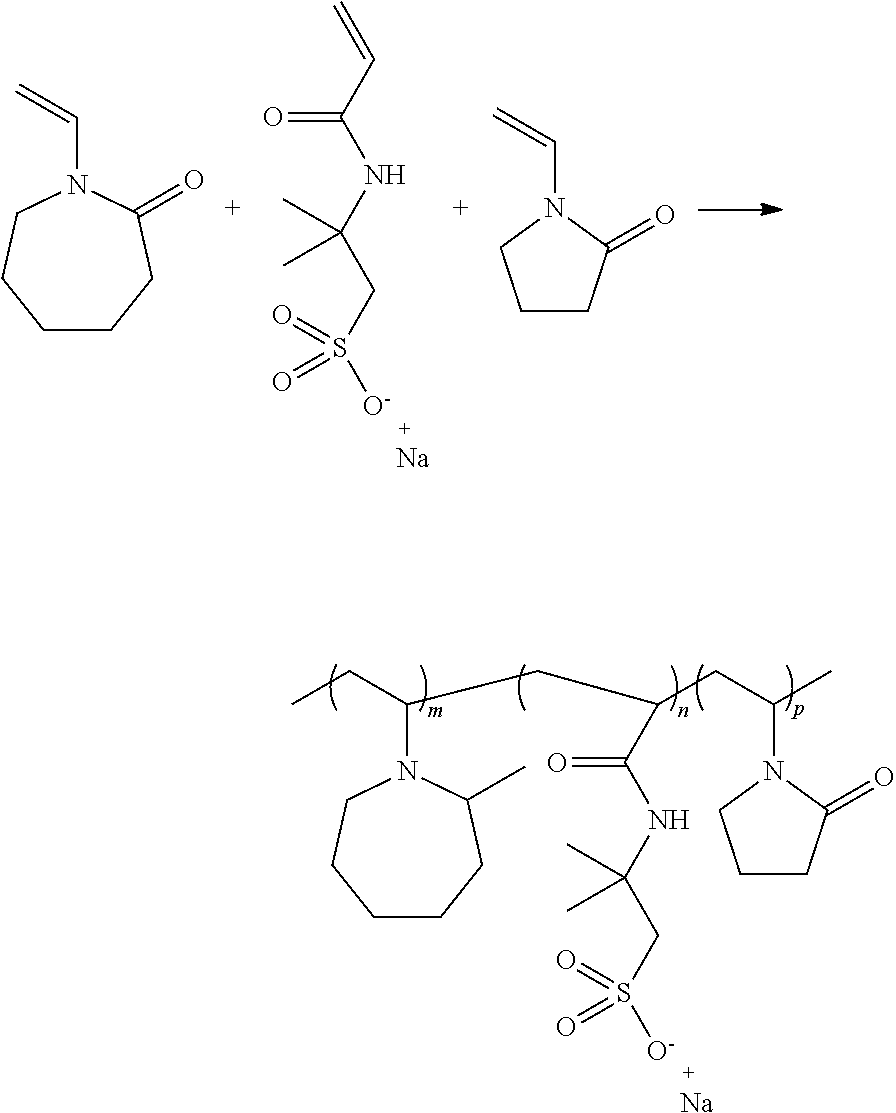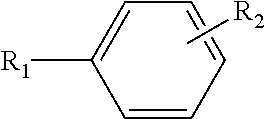Non-homopolymers exhibiting gas hydrate inhibition, salt tolerance and high cloud point
a non-homopolymer and gas hydrate technology, applied in the field of polymers, can solve the problems of poor kinetic hydrate inhibitor, blockage of conduits and/or compromise the integrity of construction materials, and many challenges in the extraction and fluid transportation of oil and natural gas
- Summary
- Abstract
- Description
- Claims
- Application Information
AI Technical Summary
Benefits of technology
Problems solved by technology
Method used
Image
Examples
example 1
Synthesis of Poly(80.9% VCL-9.2% NaAMPS-9.9% AM) (Mole Ratios) in EG
[0149]
[0150]A quantity of 80.0 g of ethylene glycol (EG) was charged into a 1-L resin kettle, fitted with a propeller agitator, a heating mantle, a reflux condenser, nitrogen gas inlet and outlet tubes, and a thermocouple. Then, 60.0 g of N-vinyl-2-caprolactam (VCL), 61.0 g of 2-acrylamido-2-methylpropane sulfonic acid sodium salt (NaAMPS) solution, and 9.5 g of acrylamide (AM), along with an additional 39.5 g of EG were pre-mixed in a 250 mL beaker. After adjusting the pH of this pre-mix solution to 10 using NaOH, 17.0 g were charged into the reactor. Under nitrogen purge and vigorous stirring, the reactor was heated to 102° C., upon which the initiator t-butyl peroxypivalate (Trigonox® 25C75) was charged into the reactor. Then, after 15 minutes, the remaining 153 g of the pre-mix solution was metered into the reactor over a period of 180 minutes. Overall, initiator was charged into the reactor every 15 minutes for...
examples 2-5
Synthesis of Other Poly(VCL-NaAMPS-AM) Polymers
[0151]Example 1 was substantially repeated four times to produce other poly(VCL-NaAMPS-AM) terpolymers, each with more than 50 molar percent VCL, as summarized in Table 1.
TABLE 1Poly(VCL-NaAMPS-AM) polymers of Examples 1-6.polymer frompolymer molar compositionExampleVCLNaAMPSAM180.9%9.2%9.9%290.5%4.6%4.9%371.7%14.3%14.0%461.4%18.6%20.0%551.8%23.9%24.3%
example 6
Polymer Characteristics
[0152]HPCL analysis was employed to determine the residual monomer concentration in the polymerized product. Samples were dissolved at 1% (w / w) in deionized water and allowed to sit overnight. The clear solutions thus obtained were filtered using a 0.45 μm cutoff filter, and the filtrate was injected. NaAMPS and AM were not found in the polymers at levels either above the limit of detection or the method quantitation limit, and residual VCL was detected (Table 2).
[0153]GPC was employed to determine the polymers' weight-average molecular weight (Mw), which ranged from about 5,710 Da to 6,500 Da (Table 3). Polydispersity indexes for the polymers ranged from 2.80 to 3.90 (Table 3).
[0154]The relative viscosities of the polymers were evaluated using ethylene glycol as the standard. The relative viscosities ranged from 1.05 to 1.16 (Table 3).
TABLE 2Residual monomer concentrations for the poly(VCL-NaAMPS-AM) terpolymers of Examples 1-5.polymer frompolymer molar compo...
PUM
| Property | Measurement | Unit |
|---|---|---|
| cloud point temperature | aaaaa | aaaaa |
| temperature | aaaaa | aaaaa |
| particle size | aaaaa | aaaaa |
Abstract
Description
Claims
Application Information
 Login to View More
Login to View More - R&D
- Intellectual Property
- Life Sciences
- Materials
- Tech Scout
- Unparalleled Data Quality
- Higher Quality Content
- 60% Fewer Hallucinations
Browse by: Latest US Patents, China's latest patents, Technical Efficacy Thesaurus, Application Domain, Technology Topic, Popular Technical Reports.
© 2025 PatSnap. All rights reserved.Legal|Privacy policy|Modern Slavery Act Transparency Statement|Sitemap|About US| Contact US: help@patsnap.com



